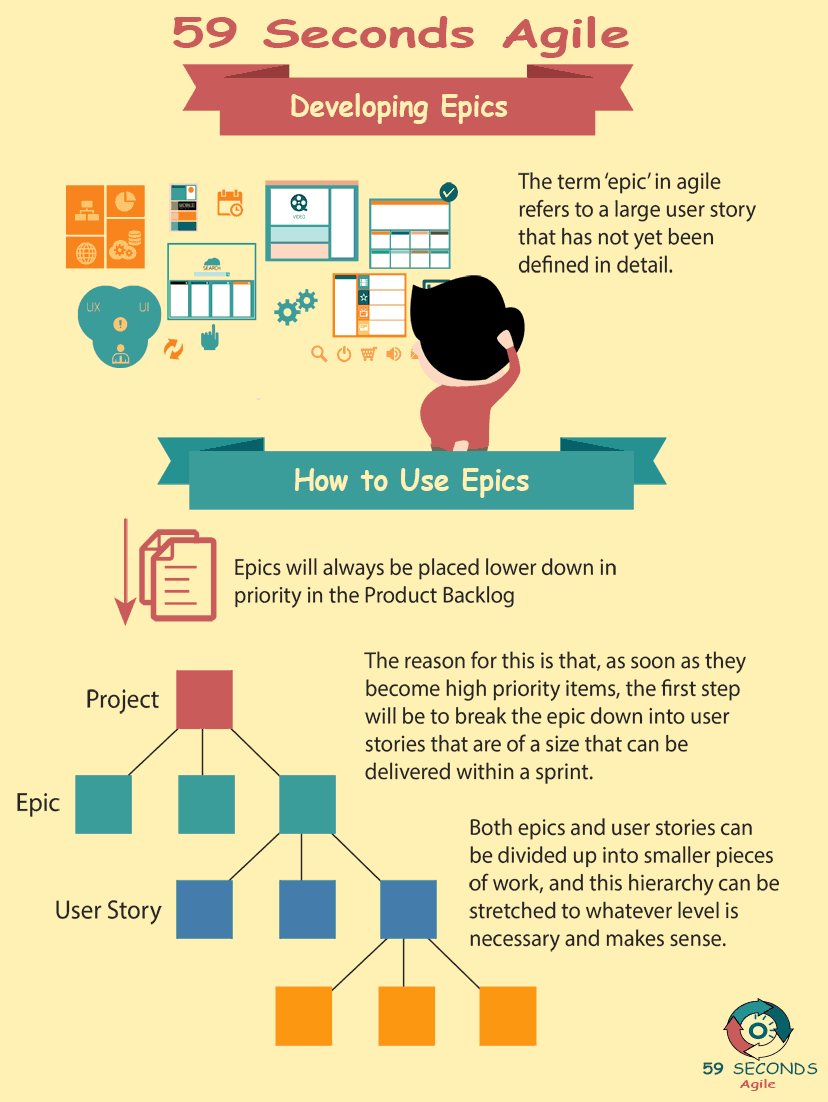This article looks to discuss Epics and User Stories and how to create them. This article is part 4 of an 8 section discussion on developing Epics and includes training videos. Part 1 is available by following this link.
Epics and User Stories
A 59 Seconds Agile Training Video
Continue to Part 5 Below
Epics and User Stories
A 59 Seconds Agile Article
This article provides an ‘Introduction to the Developing Agile Epics and personas’ and looks to discuss what an Epic Is and what a Persona is within an Agile project.
Epics and User Stories: What is the Difference?
The basic unit of work defined in Scrum is a user story. Writing user stories against features seems like a simple task. However, when covering all related work and scenarios, the same user stories can expand so much that they no longer fit in a sprint. Such user stories are then categorised as epics and are then broken down into smaller user stories.
As mentioned above, epics are larger work items that are converted into stories and can span across multiple sprints and releases. With the help of epics, the team can create a hierarchy and structure of the work items.
Epics and User Stories: Decomposition
User stories help the team to keep track of specific details of tasks at hand and they can be broken down into sub-tasks. It is good to remember that an epic is just a placeholder that can hold multiple user stories, which focus on a specific scope. Let’s have a look at an overview of the structure:
Initiatives happen at the start of the project so that we can identify epics as soon as possible and can convert them into more strategic goals or initiatives.
An example of an epic is:
Assume that a feature of your Product Backlog needs to be improved and you receive three related requests from the customer regarding the backlog improvement. The combination of these three requests can be used to form an epic.
Continue Reading —> Next
Developing Agile Epics
A 59 Seconds Agile Video Animation
Continue Reading —> Next
User Stories Applied
A 59 Seconds Agile Book Review
User Stories Applied by Mike Cohn is one of our favourite books on Agile User Stories. The book starts with an overview into user stories, and details what a user story is and the different aspects of them. He then discusses how to go about writing a user story, and provides details of the INVEST criteria that can be used to determine if the story is meeting all of its objectives. Next Mike gives an in depth discussion of who user stories are written for and where to begin when gathering the details for them. The book then discusses acceptance testing user stories, including how to go about specifying these criteria and the responsibilities of the development team and customers during this process.
Continue Reading —> Next
Epics and User Stories
A 59 Seconds Agile Infographic

